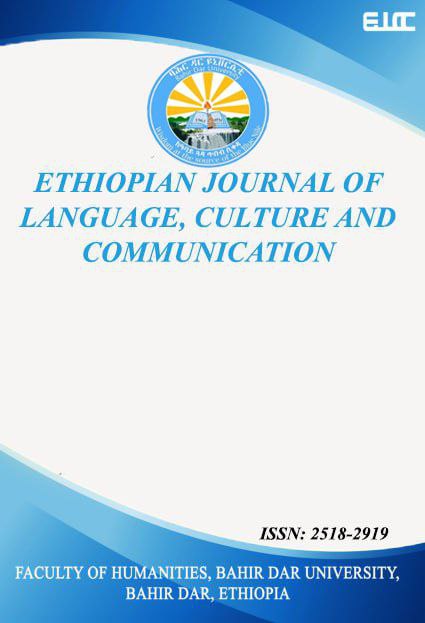Syntactic Object Marking in Tapo
Abstract
Opuuo refers both the language and the people. The speakers call themselves ɔpɔɔ and their language t‘aa pɔɔ. It is a Nilo-Saharan language, classified under the Koman sub-family (Bender 2000, Ehert (2001). This paper has described syntactic object marking with original field work carried in Wanke village in the Ethiopian side. Tapo has relatively flexible word order in both the transitive and intransitive clauses. The basic word order is Agent-Verb-Object in transitive and, Subject-Verb in intransitive. The other word order varieties are Verb-Object-Agent and Object-Agent-Verb in transitive verbs and Verb-Subject in intransitive verbs. These syntactic constituents marked through positioning. Consequently, the language does not have a major morphological case system, except the comitative that marks mainly oblique. Tapo marks object based on semantic hierarchy of entities belong to human, animal and inanimate. The most dominant hierarchy being human entities as a beneficiary placed following the verb, followed by animate and inanimate entities that would take secondary object position whenever the object constituents are composed of animate and inanimate entities, Human > Animate > Inanimate. A predicate has indirect OB and direct OB constituencies, the first being a beneficiary or indirect object and the second direct OBJ, human followed by in animate. If this order changes to inanimate > human, become a possessive clause. Similarly animals follow the verb as a beneficiary and inanimate entities follow the beneficiary as a direct OBJ. In case in which both objects are inanimate, the consumer as a beneficiary preceded the consumed. If indirect OB and direct OB reversed, yields a Noun-Noun phrase.
Authors who publish with this journal agree to the following terms:
- Authors retain copyright and grant the journal right of first publication with the work simultaneously licensed under a Creative Commons Attribution License that allows others to share the work with an acknowledgement of the work's authorship and initial publication in this journal.
- Authors are able to enter into separate, additional contractual arrangements for the non-exclusive distribution of the journal's published version of the work (e.g., post it to an institutional repository or publish it in a book), with an acknowledgement of its initial publication in this journal.
- Authors are permitted and encouraged to post their work online (e.g., in institutional repositories or on their website) prior to and during the submission process, as it can lead to productive exchanges, as well as earlier and greater citation of published work (See The Effect of Open Access).


